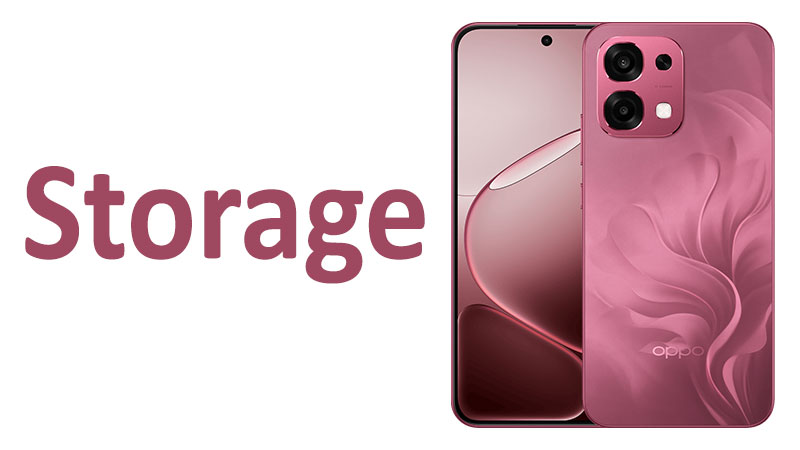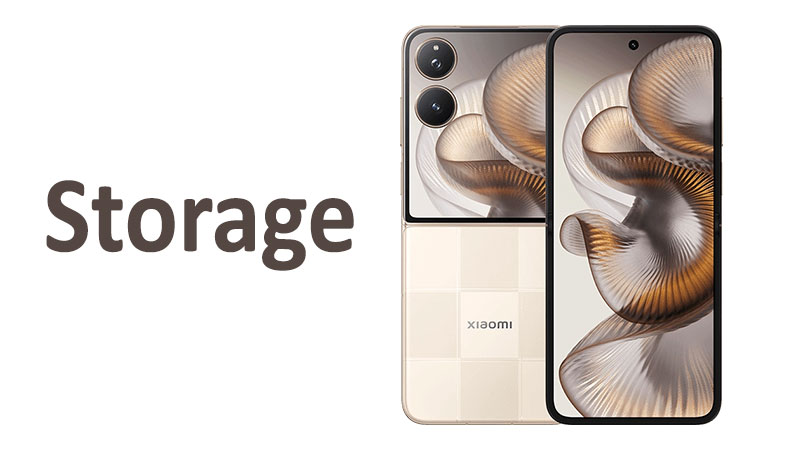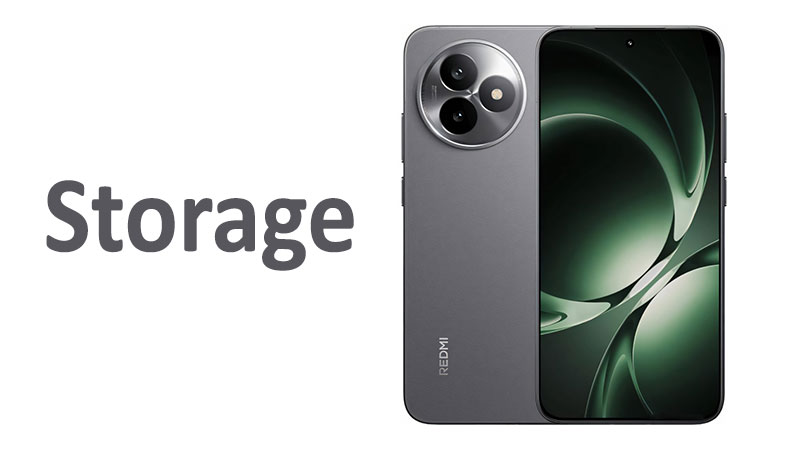Oppo F31 storage is one of the most critical specifications for potential buyers. Understanding the capacity, storage type, and configuration options is essential. This guide provides a thorough review of the Oppo F31’s memory system. It helps you make an informed purchasing decision. We will examine the internal storage configurations available. Furthermore, we will explain the technology driving the speed of this device. This detailed analysis will prepare any reader for their next smartphone purchase.
Deep Dive into Oppo F31 Storage Capacity
The Oppo F31 offers two distinct storage configurations. These options cater to different user needs and budgets. Buyers can choose between 128GB and 256GB internal storage models. Each configuration is paired with the same generous 8GB of RAM. This pairing ensures smooth multitasking across the board. Choosing the right capacity is often the first major decision. It affects the overall lifespan and utility of the device.
The 128GB Base Model: Who is it For?
The 128GB variant serves as the entry point for the Oppo F31. This capacity is ample for most standard smartphone users. It easily accommodates a large number of applications and documents. Furthermore, it holds thousands of photos and hours of video. This model is ideal for users who rely heavily on cloud storage. They might frequently back up their data to services like Google Drive or Dropbox.
This 128GB model is perfect for casual gamers. It suits individuals who primarily use social media and streaming apps. They will rarely run out of space for their essential files. However, intensive users should consider the larger option. They may quickly fill up the available storage with high-resolution media. Therefore, assessing your current usage habits is highly recommended before buying.
Stepping Up to 256GB: The Power User’s Choice
The 256GB configuration offers double the internal storage. This massive capacity is built for power users and content creators. It provides substantial room for expansive media libraries. Users can store large 4K video clips and high-quality raw photos. This eliminates the constant need for manual file management.
This option is crucial for dedicated mobile gamers. Today’s most demanding games can consume several gigabytes each. The 256GB storage ensures all your favorite titles remain instantly accessible. It also provides a significant buffer for future software updates. Ultimately, the larger 256GB Oppo F31 storage future-proofs the device. This provides peace of mind for users planning to keep the phone for several years.
Capacity vs. Usable Space: What Buyers Need to Know
It is important for buyers to understand a crucial detail. The listed capacity is not the actual usable space. A portion of the internal storage is reserved for the operating system. It is also used for pre-installed applications and system files. This reserved space can typically range from 15GB to 25GB.
For instance, a 128GB Oppo F31 model might offer around 105GB of free space. The 256GB model would similarly offer slightly less than its listed capacity. This factor is essential when comparing specifications. Always factor in the system overhead during your storage calculation. This small difference can influence which configuration best suits your data needs.
Understanding Storage Technology: UFS 2.2 Explained
The speed of internal storage is just as vital as its capacity. The Oppo F31 utilizes UFS 2.2 technology for its internal storage type. UFS stands for Universal Flash Storage. This standard is significantly faster and more efficient than older technologies. It governs how quickly the phone can read and write data. This directly impacts app loading times and system responsiveness.
UFS 2.2 Speed and Performance Benchmarks
UFS 2.2 is known for offering robust performance gains. It delivers impressive sequential read and write speeds. Sequential read speed measures how quickly the phone can load large files. This is important for opening big applications or loading games. Sequential write speed affects how fast the phone can save a large file. This applies when recording 4K video or installing a large update.
Furthermore, UFS 2.2 excels in random read and write operations. These random operations are the key to excellent multitasking performance. They determine how quickly the phone can access many small pieces of data simultaneously. This means the Oppo F31 launches apps almost instantaneously. It also switches between demanding tasks without noticeable lag. The UFS 2.2 standard truly defines the phone’s speed.
Specialized Comparison: UFS 2.2 vs. eMMC
The UFS 2.2 standard represents a major step up from older eMMC technology. eMMC (embedded MultiMediaCard) was the previous common storage type. eMMC is much slower in both read and write operations. Its architecture is less efficient for simultaneous data transfer. UFS 2.2 is superior primarily due to its faster bus speeds.
More importantly, UFS 2.2 utilizes full-duplex communication. This means it can read and write data at the same time. eMMC operates in half-duplex, handling only one operation at a time. This fundamental difference makes the Oppo F31 feel dramatically quicker. Boot-up times are faster. App installs complete much more quickly. The jump from eMMC to UFS 2.2 is a major selling point for the F31.
Impact of UFS 2.2 on Daily Oppo F31 Performance
The practical benefits of UFS 2.2 are clear in daily use. When you open the camera app, it loads instantly. Saving a burst of high-resolution photos happens in the background without freezing. The phone handles demanding tasks smoothly. This includes editing a video or running a graphics-intensive game.
The quicker storage also plays a role in battery efficiency. Faster data transfer means the components are active for shorter periods. This reduces overall power consumption. Consequently, the Oppo F31 benefits from better battery life under heavy load. The storage type is therefore a key indicator of overall device performance. It is a feature savvy buyers should prioritize.
The Configuration Synergy: Storage and 8GB RAM
The Oppo F31 storage configurations are uniquely paired. Both the 128GB and 256GB models come with 8GB of RAM. RAM (Random Access Memory) handles active processes and multitasking. It works in lockstep with the internal storage. This combination creates a powerful and efficient processing system. The 8GB RAM ensures that multiple apps run in the background effortlessly.
How 8GB RAM Boosts Storage Performance
The 8GB RAM module acts as a fast-access buffer for the UFS 2.2 storage. When an application is opened, it is loaded from the UFS 2.2 storage into the RAM. The large 8GB capacity allows the phone to keep more applications ready. This reduces the need to constantly reload apps from the slower internal storage. This is known as the cold boot process.
For example, a user might switch between a browser, a game, and a photo editor. The 8GB RAM keeps all three active in memory. When the user returns to an app, it opens instantly. The storage is only called upon when new data needs to be saved. This synergy provides a fluid, high-speed user experience. It optimizes the interaction between memory and storage.
Specialized Comparison: F31 Storage vs. Competitors’ RAM/Storage Mix
Many competitor smartphones offer similar storage options. However, they sometimes pair them with less RAM, such as 6GB. The Oppo F31’s standard 8GB RAM provides a significant competitive edge. This extra memory ensures better longevity and multitasking resilience. Older models often suffer from performance degradation as apps become more resource-heavy.
In contrast, the F31 maintains superior background process management. The combination of 8GB RAM and fast UFS 2.2 storage is potent. It positions the Oppo F31 favorably against rivals in its segment. Users receive high-end performance without needing to pay a premium price. This storage and RAM balance is highly optimized for modern mobile demands.
Pros and Cons of the F31’s 8GB RAM and Storage Pair
Understanding the trade-offs is crucial for a complete assessment. The Oppo F31 offers compelling advantages. However, it also has certain limitations compared to the very highest-end devices.
Pros:
- Fast Data Access: The UFS 2.2 technology ensures rapid application loading times.
- Excellent Multitasking: 8GB of RAM handles numerous background apps smoothly.
- Future-Proofing: The ample RAM and storage capacity extend the phone’s useful life.
- Efficient Battery Use: Faster storage reduces the overall component operation time.
- Generous Base Capacity: Even the 128GB model is enough for the average smartphone user.
Cons:
- Not UFS 3.0/3.1: The UFS 2.2 standard is excellent but not the absolute fastest available.
- No 12GB RAM Option: High-end users might prefer 12GB RAM for extreme gaming or professional use.
- System Overhead: As with all devices, a portion of the storage is taken up by the system files.
Expanding Your Digital Horizon: The microSDXC Card Slot
The Oppo F31 features a dedicated microSDXC card slot. This is a highly valued feature in the current smartphone market. Many premium competitors omit this option entirely. The ability to add expandable storage is a major relief for heavy media users. It provides virtually limitless capacity for photos and videos.
Limitations and Benefits of Expandable Storage
The primary benefit is cost-effective capacity expansion. A high-capacity microSDXC card is significantly cheaper than upgrading to the 256GB model. Users can store their extensive music libraries and movie files externally. This keeps the faster internal UFS 2.2 storage reserved for apps and system files. This optimization improves overall device performance.
However, there is a key limitation. Even the fastest microSDXC cards are generally slower than UFS 2.2 internal storage. Therefore, apps installed directly onto the card will load more slowly. Users should reserve the external card for media storage only. They should keep essential applications and games on the internal memory. This strategic approach maximizes performance.
Choosing the Right microSDXC Card for the Oppo F31
Selecting the correct external storage is important. Buyers should opt for microSDXC cards with high speed ratings. Look for cards with the A2 rating for application performance. Also, search for the V30 rating for fast video recording. These ratings guarantee sufficient speed for 4K video capture and fast file transfers.
Using a slow card can negatively affect the phone’s performance. It may cause stuttering when recording video. It can also slow down file browsing. Investing in a quality, high-speed microSDXC card is necessary. This ensures the best experience when utilizing the Oppo F31’s expandable storage capabilities.
Managing Data Between Internal and External Storage
Effective data management is key to using the microSDXC slot well. Users should configure the camera app to save photos and videos directly to the card. This protects the internal storage from quickly filling up. Applications like file managers allow easy transfer of existing files.
It is simple to move old downloads or large media files to the card. This frees up the internal UFS 2.2 memory. Maintaining free internal space is vital for optimal performance. The phone uses a portion of its free internal space for caching operations. This constant movement of data is made easy by the Oppo F31’s intuitive file system.
The Comprehensive Oppo F31 Storage Buyer’s Guide
Choosing the correct Oppo F31 configuration goes beyond just price. It involves a thoughtful assessment of your specific usage habits. This buyer’s guide provides final considerations. It helps ensure you select the perfect storage option for your lifestyle. Consider these points before finalizing your purchase decision.
Assessing Your Storage Needs Before Purchase
Start by reviewing your current phone’s storage usage. Are you currently using more than 80GB? Do you frequently take high-resolution videos? If you answered yes to either, the 256GB model is likely a better investment. It prevents future storage anxiety. It also avoids the hassle of constantly deleting files.
Conversely, if you mainly stream content and use minimal apps, 128GB will suffice. You can always rely on the microSDXC slot for large, non-essential media. Do not overspend on capacity you will never use. However, remember that the storage choice is permanent for the life of the phone. You cannot upgrade the internal capacity later.
Long-Term Storage Considerations and Future-Proofing
Software and applications continue to grow in size. What seems like enough storage today may become limiting in two years. Modern operating systems and app updates consume more space over time. Future-proofing means choosing capacity with anticipated growth in mind. The 256GB model offers a significant safety margin.
The included 8GB of RAM also contributes greatly to future-proofing. It is an ample amount of memory for upcoming mobile operating systems. This balance of high RAM and fast UFS 2.2 storage ensures sustained performance. It keeps the Oppo F31 competitive for many years to come. This makes the device a smart, long-term mobile investment.
Key Takeaways for New Oppo F31 Owners
New Oppo F31 owners should immediately perform a few actions. They should first insert a high-speed microSDXC card if they purchased the 128GB model. They should then configure the camera app to save media to the external card. This maximizes the utilization of the fast internal storage for apps.
Remember the speed differential between UFS 2.2 and microSDXC. Prioritize placing all performance-critical apps on the internal storage. Use the external storage strictly for music, movies, and backups. This best practice ensures you get the fastest possible experience from your new Oppo F31.
Conclusion
The Oppo F31 storage system offers excellent specifications for its class. The core configurations of 128GB/8GB RAM and 256GB/8GB RAM are highly competitive. The use of UFS 2.2 technology provides a significant speed advantage. It ensures quick app loading and smooth multitasking. This is a noticeable improvement over devices still using eMMC storage.
Furthermore, the inclusion of a microSDXC card slot is a major bonus. This offers users flexibility and affordability for media expansion. Buyers can confidently choose the 128GB model for daily use. Power users and creators will find the 256GB model future-proof and reliable. Overall, the Oppo F31 delivers a balanced, high-performance storage solution. This comprehensive system is built to handle the demands of modern smartphone usage.
Frequently Asked Questions (FAQ)
How fast is the Oppo F31’s internal storage?
The Oppo F31 uses UFS 2.2 technology. This provides fast sequential and random read/write speeds. This translates to quick app loading and smooth overall device performance.
Can I increase the Oppo F31’s storage capacity?
Yes, the Oppo F31 includes a dedicated microSDXC card slot. Users can easily expand the phone’s storage for photos and videos using a memory card.
Is the 128GB Oppo F31 model enough for most users?
The 128GB capacity is sufficient for most standard users. It holds many apps and media files. However, intensive users or 4K video recorders should consider the 256GB option.
What is the advantage of UFS 2.2 over eMMC storage?
UFS 2.2 is much faster than eMMC. It allows for simultaneous reading and writing of data. This drastically improves multitasking efficiency and app launch times on the Oppo F31.
Does the 8GB RAM affect the storage speed?
Yes, the 8GB RAM works with the UFS 2.2 storage. It keeps more apps active in the background. This reduces the need to constantly reload data from the storage, making the phone feel faster.



